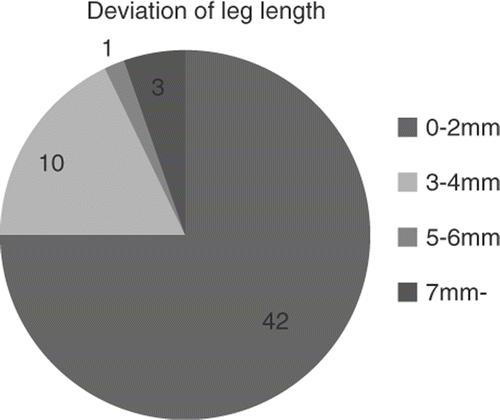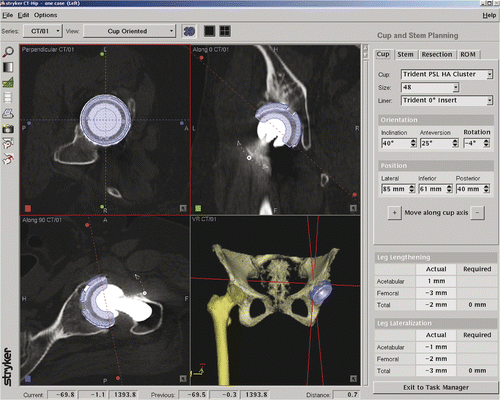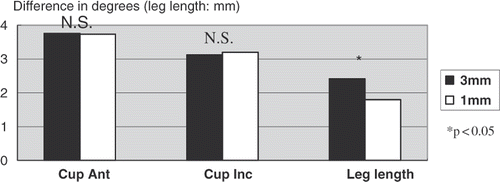Figures & data
Figure 1. Screen display showing the inclination and anteversion of the cup, the anteversion and varus/valgus angle of the stem, and the leg length compared with the contralateral side.
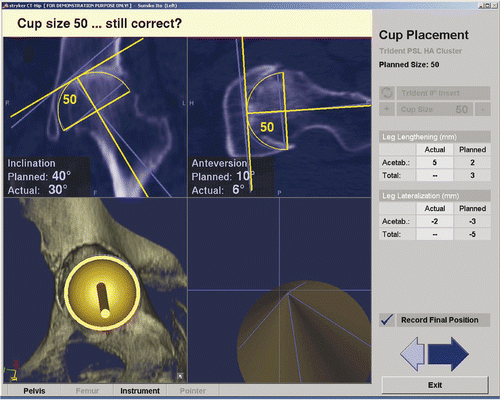
Figure 3. Mean deviation of cup anteversion, inclination and stem anteversion using navigation and manual methods. There is only a significant difference for cup anteversion.
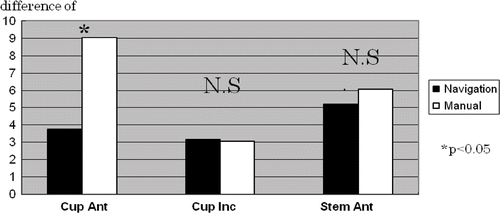
Figure 4. Mean deviation of leg length compared with the contralateral side using navigation. 52 of the 56 cases are within 5 mm, and 41 of the cases are within 2 mm.
